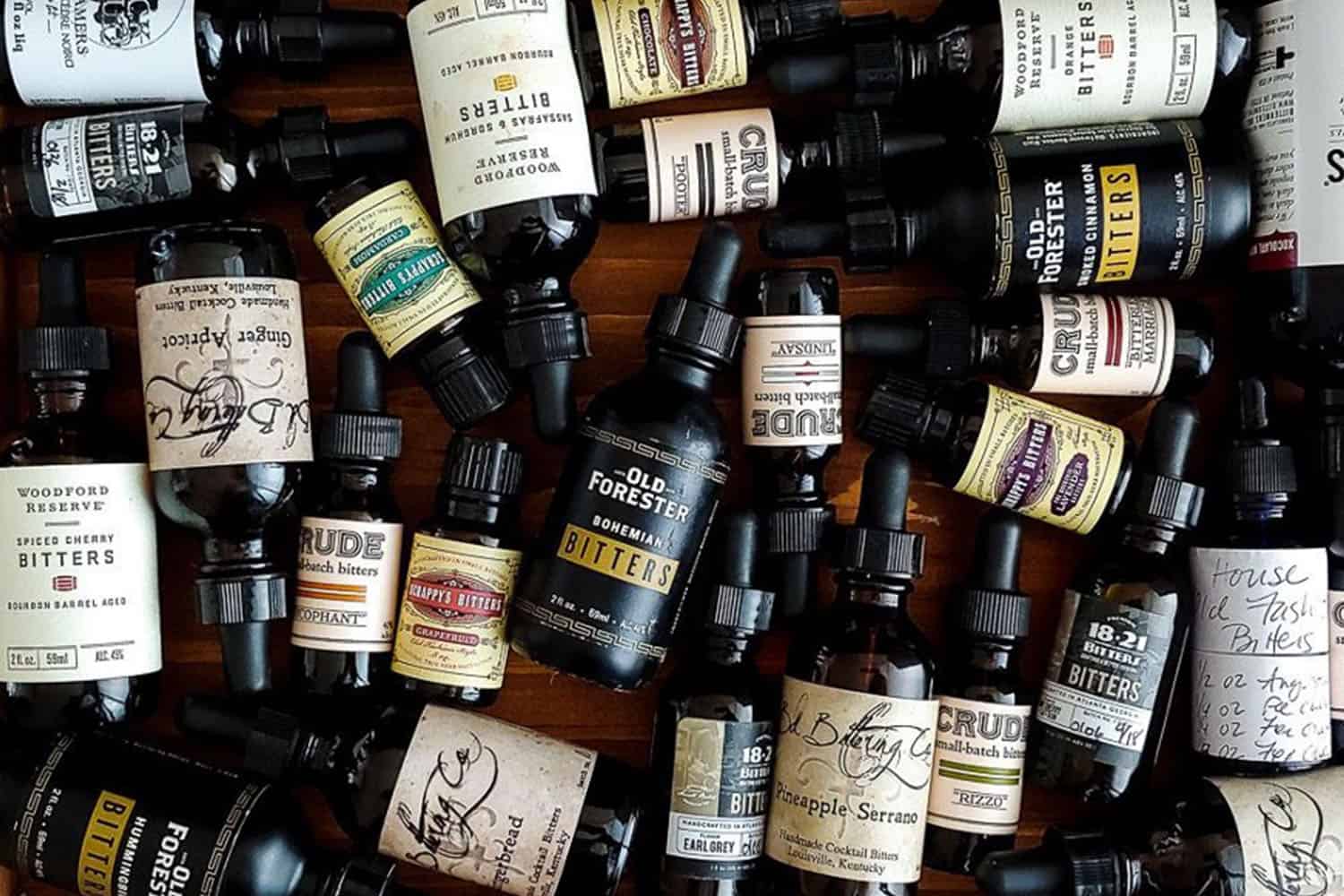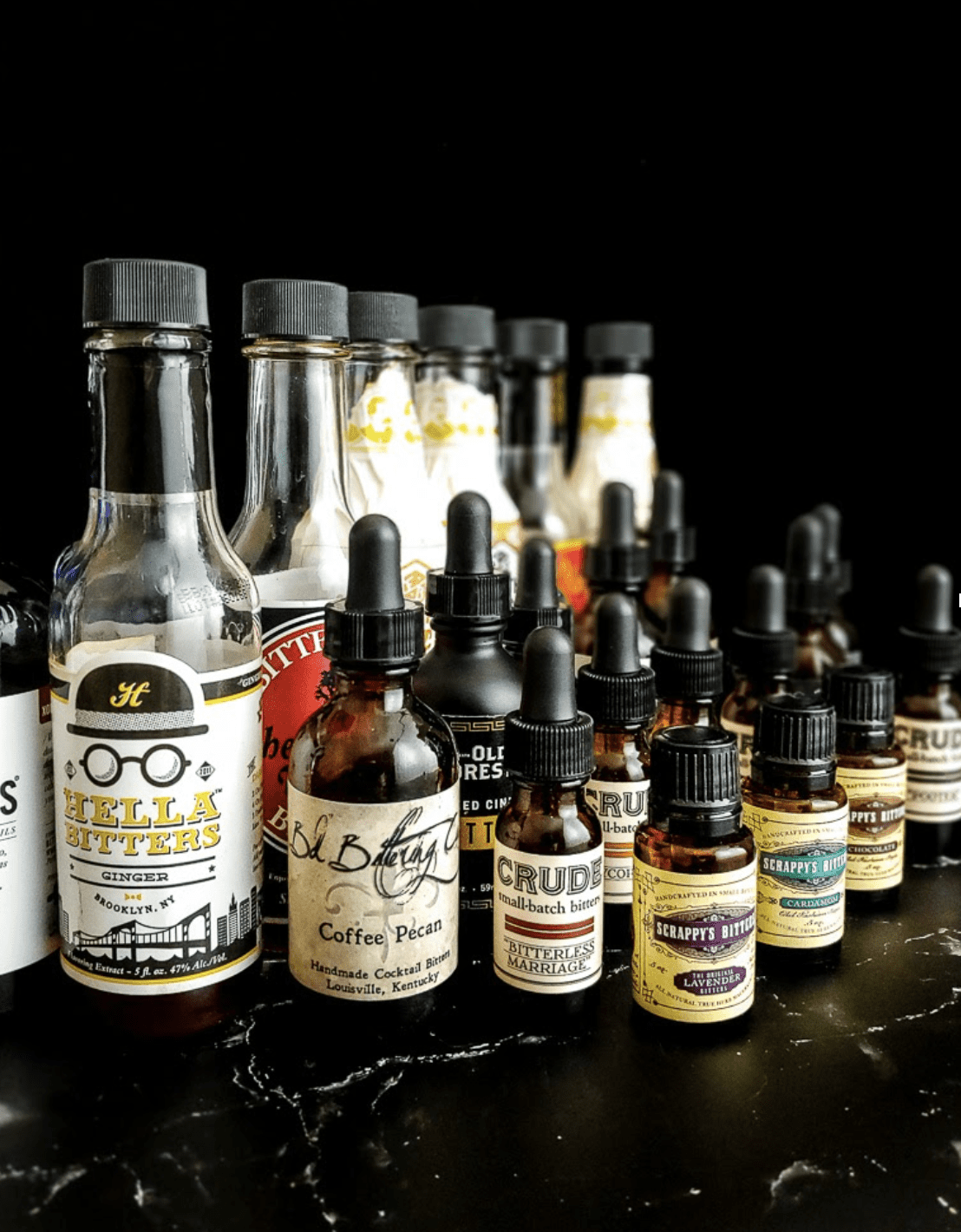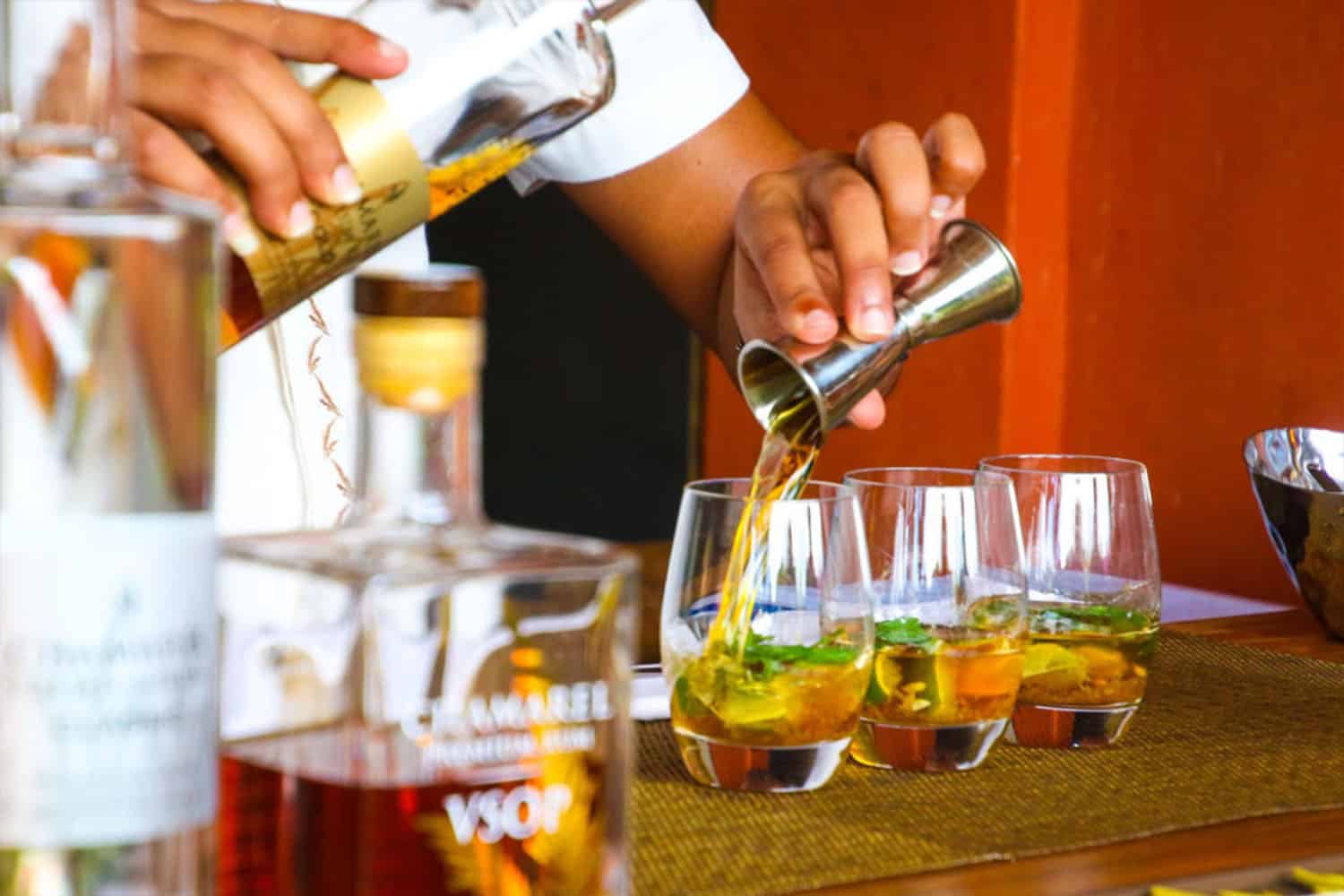
6 Tips to Use Cocktail Bitters Better
After making so many cocktails at home, there are some cocktail bitters tips I’ll pass on to you. Some of these I’ve learned the hard way. Some are just common sense. All of these are practices I use every single time I create a cocktail with bitters. None of these are rocket science, but forgetting any of these can ruin a great cocktail.
(If you need to know more about bitters and Bourbon specifically, head over to my article Bitters and Bourbon – All About Bitters and How to Use them in Cocktails.)
1. Go Low
Err on the low side. You can always add more. If you’re not sure how much to add, start with a dash or two, taste the cocktail, then see if you need to add more. Make the cocktail in a mixing glass or shaker so you can easily re-stir or re-shake as needed after any additions)
2. Check the Dasher Bottle
There are two things to check before you dash those bitters into your mixing glass or shaker. Both are critical to creating and recreating your cocktail.
Check that the top of the dasher bottle is in place. If for some reason that small rubber top with the hole in it comes off, the last thing you want to do is a vigorous shake over a mixing glass filled with your cocktail contents. (I’m not going to tell you how I know that!)
While you’re at it, check the volume remaining in the dasher bottle itself. Note that the dashes will be smaller in volume when the bottle is new and full and at the very end of a bottle. When more of the bottle is empty, more of the bitters come out in each dash. Take that into account as you build your cocktails.
3. The Difference between Drops and Dashes in Bitters
Note drops vs dashes in recipes. Some bitters come in dispensers for dashes. Those are the ones with the small holes in the top, like a hot sauce bottle. Others come with eye-droppers. Don’t mistake a drop for a dash. You don’t want to add 12 dashes of bitters in place of 12 drops! Yuck!
Once you’ve made a few cocktails, it’s easy to spot this mistake in cocktail recipes, but as you create your own or start balancing multiple bitters in a drink, take note if you’re using an eye-dropper type bitter bottle or a dasher.
Sometimes different sized bottles (or later releases of the same bitters) will change from one to the other. As a quick rule, I usually consider about 1/2 of a dropper, or about 8-10 drops the same as a dash.
There’s some controversy around this as it actually also depends on the size of the dropper and the size of the hole in the top of the dasher bottle.
Nothing’s ever easy these days, is it?
My general rule is to do things consistently so I can recreate a recipe with the tools I have and advise anyone making a cocktail to adjust according to their own palates.

4. Sniff Test
To see if bitters are compatible with a drink or ingredient, use the sniff test. Take a smell of both of the elements at the same time, or just sniff one then the other and see if they smell good together. Since aroma is the primary component of flavor if they bind well in terms of smell, they will likely be complementary flavors.
I rely on this heavily when I’m developing a new recipe or creating a riff on a classic. Since I use so much whiskey and it varies so greatly between expressions, choosing the whiskey to use for a cocktail is not an easy matter.
I face the same problems with rums and gins. The differences between brands and releases can be wildly different. The best indicator to me if things will balance together in flavors is if they have complementary aromas.
Here’s what I do, if I’ve already combined all the elements except bitters into the shaking tin or mixing glass I bring the bitters I’m considering to the bar and open them. I’ll hold the mixing glass up, take a sniff, then sniff the open bitters bottle at the same time. If the two flavors meld well together, they’ll usually play well in a cocktail. If they don’t I move to another bitter.
Sometimes, if the bitter flavor is critical to my idea of the cocktail, I’ll have to change out the base spirit or the sweet/acid elements.
While this test doesn’t work 100% of the time, I’d say 80% of the time it’s a great indicator if the bitters will work in your drink.
5. Make a Baby Cocktail
If I’m still unsure of a combination of flavors, occasionally I’ll make a teeny mini cocktail. I’ll put a tiny splash of the cocktail elements in a shot glass with a dash of the bitters to see how they all meld together. The balance will be off, but I can see if the flavors work together.
While not scientific, I often use this to see if flavors I don’t usually pair together will work well, whether this is the base spirit or cocktail elements or bitters. It’s not a full cocktail, and it’s not a measured creation, but it’s a way to see if there are any jarring issues with the cocktail flavors you are working with.
6. Measure, Measure, Measure
The key to creating (and recreating) a great cocktail is measurement. Measure the base spirit and the flavoring elements in your cocktails. If you’re working on an idea for a cocktail, make sure you’re writing them down.
I can’t tell you how many great cocktail recipes I’ve “lost” because by the 2 or 3rd iteration I’ve simply forgotten to write down the last iteration in my notes. A lot of that is from the taste-testing part of creating cocktails, to be honest, and it’s why if I don’t love a cocktail, or want to play with it I often pour it in a small bottle instead of drinking it while I work on the next one.
Friends and family don’t mind being gifted these small bottles of cocktails. What’s not yet perfect to me might be just what my best friend needed to throw in a glass over ice after a hard day at work.
Unlike working with food recipes, consuming your research can impede your ability to create cocktails in the first place. Drink mindfully. If you’re putting care into how you make your cocktails, put care into how you drink them.

7. Now go Play with your Bitters
So learn from my mistakes and step up your cocktail game by mastering bitters. Just using those 6 tips above will improve your work with bitters at home massively.
And for God’s sake, be careful with knives after that first drink. If I’m working on citrus I made sure to cut what I need to juice before I start consuming the cocktails. No emergency room visits for me, thank you.
(And also, don’t wash the knives and slicers you used to create garnishes until you’re sober again. I may have learned this the hard way and was for a few weeks known as the nine-fingered mixologist.)

About Heather Wibbels, the Cocktail Contessa
Heather Wibbels, an award-winning mixologist and Chair of the Bourbon Women Board of Directors, is a digital content creator and photographer creating whiskey drinkers one cocktail at a time. Her creations can be found in Bourbon Plus, American Whisky Magazine, Drinkhacker, Insider, The Manual, Alcohol Professor, Food and Dining, and The Bourbon Review. Her book, Bourbon is My Comfort Food: The Bourbon Women ™ Guide to Fantastic Cocktails at Home, will be released May 2022. You can find her at www.cocktailcontessa.com, and @cocktail_contessa on Instagram.